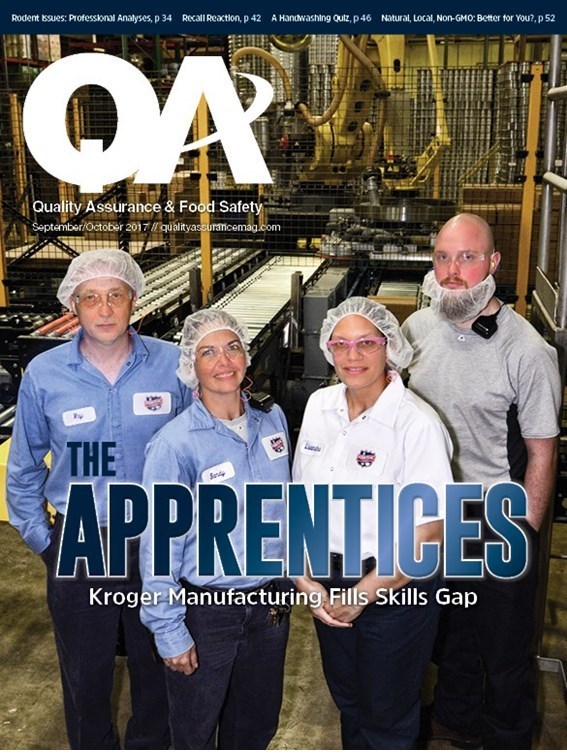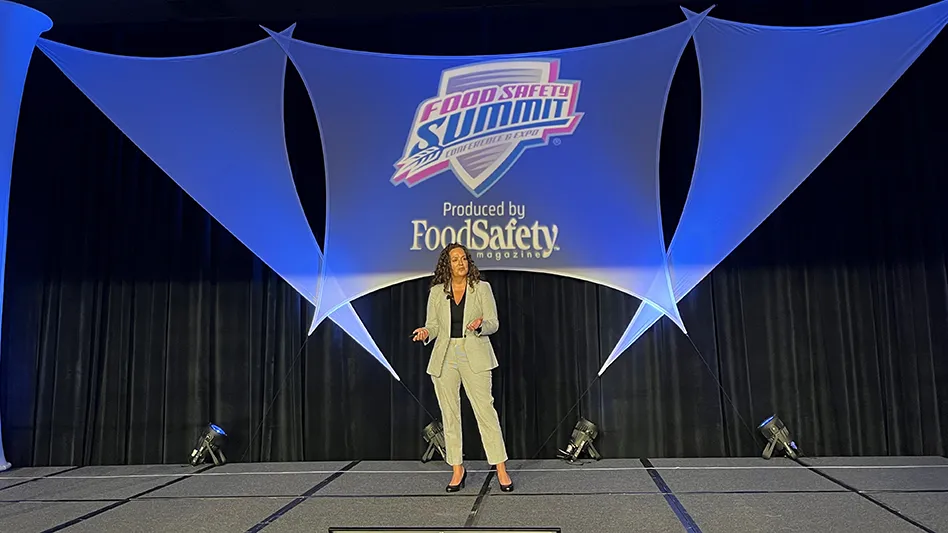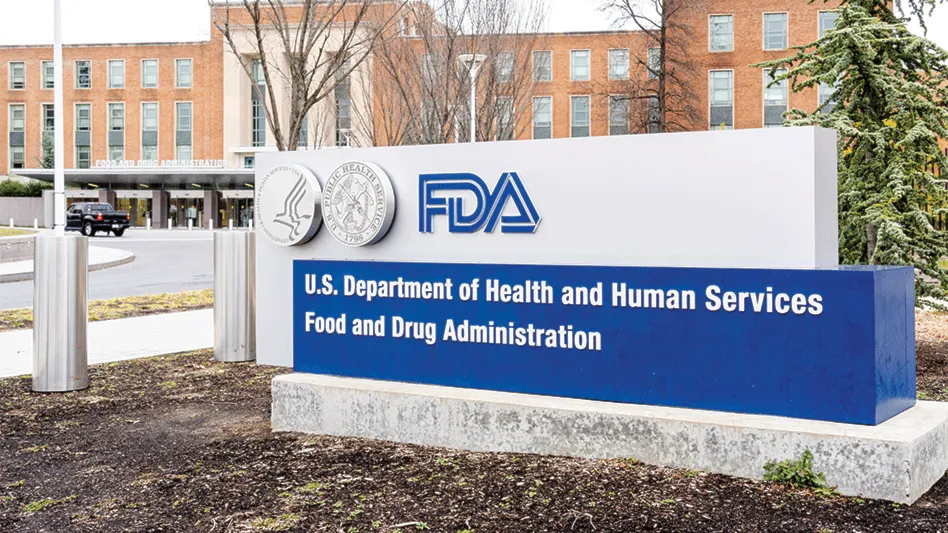
By Lisa Lupo
It takes only a quick scroll through FDA’s Recalls, Market Withdrawals & Safety Alerts to see that food recalls occur on a nearly daily basis to a vast range of food companies. But what do you do when it happens to you?
Because the first concern should always be protecting consumers from adverse effects of food contamination of any sort, advance preparation through a written recall plan is critical — and is, in fact, required by FSMA. However, there is another facet of recalls that companies need to consider once consumer protection is ensured: that is, brand protection.How does a food company stay ahead of the curve to protect, then rebuild, its brand reputation when a recall is announced? What needs to be done immediately, soon, and down the road?
THE FIRST 24 HOURS/WEEK. “Bring your recall team together,” said The Acheson Group Senior Director of Food Safety Cameron Prince. Along with senior management, legal counsel, and insurance representatives, communication personnel should be involved from the very start, he said. “If not, they’ll always be playing catch up.”
Within the first 24 hours, you also need to dedicate a “war room,” assemble the team, and bring discipline around the management of it, Prince added. The team will be spending a lot of time in the war room, so make sure they have everything they will need. Then, he said, “Notify FDA as soon as you can. Don’t be afraid to notify them; FDA is actually your friend.” And, in any case, you will have to deal with them eventually, so it’s best to contact FDA as soon as you know there is a risk to the public.
On the other hand, Food Industry Counsel Founder and Attorney Shawn Stevens said you shouldn’t overreact. In recent years, there has been a tendency for companies to overreact to suggestions from consumers or other parties to FDA, that product may be contaminated or causing a problem, he said. Too often, both FDA and the food company will rush to judgment on the product and scope without having all the information or considering the impact. “It doesn’t do consumers or the industry any good if more product or wrong product is recalled,” Stevens said.
This can be particularly true when an issue originates in an ingredient, because a single pound of recalled ingredient can ultimately trigger the recall of millions of pounds of finished product. Take for example, the incident of a salt which was facing a foreign-object contamination recall that would have resulted in the recall of 100 million pounds of finished product. Because the contaminant did not present a reasonable probability of health risk in the finished product, the company engaged with FDA to dispute the recall — and was successful. But companies are generally afraid to engage with FDA in such a way, Stevens said, resulting in decisions that are made too abruptly without anyone asking the right questions.
While this should be done within the first 24 hours, the company needs to first ensure it is fully prepared. “Do a comprehensive investigation and due diligence to ensure you know all the facts,” Stevens said.
If you do need to recall, move forward with your plan, determining what needs recalled — and what doesn’t, adequately detailing the reasons for both. And do it quickly. “There can be very serious consequences if it is not done quickly,” Stevens said.
COMMUNICATION: INTERNAL, EXTERNAL. It is important that employees are informed that a recall is being considered or happening, and that they are told to whom they should direct any questions they receive, Stevens said. Employees should never discuss the incident with the media themselves, but should be told to refer all external queries to the designated communications person.
This is one area where advanced preparation is critical. Rather than attempting to write a press release at the last-minute, companies should have a generic release on hand which can be tweaked to fit the incident, Stevens said, adding, “Be very polite to reporters. Say, ‘Yes, we have announced a recall, but it would be very helpful if you could send me your questions in writing, along with your deadline, and we will respond.’”
That tends to be the best way to respond, he said. The reporters may have to wait, but they will get an answer ... and your company won’t be in the news as having said “No comment,” or being unavailable to respond.
“You have to do PR,” Prince said. But FDA has simplified this a bit, posting model press releases for the major pathogens and allergens on its website “The message is important,” Prince added. “You have to say ‘We care about you, the consumer’; this has to be a strong message up front. Do a bit of mea culpa; be proactive.”Additionally, Prince said, while senior management has to lead the recall team, they can’t get in the way. “Trying to deny it or cover it up just doesn’t work; you have to be transparent,” he said. “A lot of companies have survived recalls because they were honest; a lot have failed because they tried to cover it up.”
It’s often the smaller companies that tend to be panicky, Prince added. “If you have internal expertise, use it. If you don’t, get the very best communications or risk management people to come in and help.”
While all this is going on, designated company representatives should be calling all emergency contacts for its commercial customers. But, be sure you have all your facts at hand. Medium and small companies that have just gotten their product into a major retail chain often fear making that call. “It’s tricky,” Prince said, “but my advice is to really think through the best time and how to tell them. Be confident; have all the information ready. If they think you are hiding something, it will be worse.”
Calls also should be made to your GFSI certifying body and export authorities, as applicable. “If you are exporting, there is a lot more responsibility,” Prince said. “Just be proactive. Contact all that need to know —You can’t overcommunicate.”
When FDA does show up at the door, be sure you have all your records ready and cooperate fully, Prince said. “It’s not a criminal investigation, it’s a regular FDA investigation, so it’s not to be feared,” he said.”
It also is advisable, especially for retailers, Stevens said, to have a toll-free number for incoming calls from concerned consumers, so it is shown that the company cares and is responsive.
Prince made a similar recommendation, stating that the line should be manned 24 hours even if you have to add hours or people to do so. Responding quickly to customers will help keep you ahead of the social media wave. “If consumers call and don’t get an answer, they can wreak havoc on Facebook or Twitter in no time,” he said.
ONGOING IMPROVEMENT. A root cause investigation should be conducted, so corrective action can be determined and implemented. Today’s recalls can involve large amounts of product produced over long periods, as pathogenic strains in product or on food surfaces can be matched to those in drains, other plants, and other times. “So, how do we prevent it?” Stevens asked. “It’s environmental monitoring, environmental monitoring, environmental monitoring.
“Every case involves environmental monitoring or control, so put more testing into the process,” he said, adding, “The dialog has to change from root cause analysis to root source analysis.”
A root cause analysis determines cause such as an employee didn’t do his job right (e.g., clean the floor), with the corrective action being to retrain the employee and retest. But a root source analysis will ask how Listeria got in the drain in the first place, Stevens said. “Coupling environmental monitoring with robust root source analysis will solve a lot of problems.”
REBUILDING TRUST. Once the recall and corrective action is completed, the company often will have to rebuild the trust of its consumers and the confidence of management and employees. Transparency and honesty are critical for both, Prince said. Proactive media and social media communication is important in rebuilding consumer trust. If a senior executive can put him or herself directly in the public eye and speak well, that will go a long way, he said. Prince said he has seen companies shut down and not speak at all with the media — then go out of business. “They are viewed as hiding something,” he said. “There are lots of lessons on this out there. Hiding things never works.”
Companies generally learn a lot from having an incident, he added. If they use those lessons to make improvements, to become leaders in food safety and build a food safety culture, people see that and respect it.
A culture of food safety can be described in three Cs: compassion, commitment, and communication, Stevens said. Truly feeling that food safety is critical, living it in every action, and conveying it not only to employees but also to customers.
It often is said the food safety is non-competitive, but in actuality, he said, “Food safety is extremely competitive — to your consumers and your customers. Food safety is as important a term as food quality; it’s not a quality product if it’s not safe. Market what you are doing, and people will want to do business with you.” And, he said, do it when there is not a crisis.
SIX MONTHS/YEAR LATER. “Never, ever become complacent,” Stevens said. “In every corner of every facility, there is a pathogen just waiting.”
Stevens also believes it is important that those who have been through recalls share their stories. “A lot of companies don’t want to talk about their problems, but you should educate the rest of the industry. Instead of trying to push it away, embrace it.” Talking about it at industry functions, discussing lessons learned and how to prevent an outbreak actually will build up the brand and set up the company as a thought leader, he said.
Prince agreed. “If you’ve learned something from a recall, go out and share it if it will help others. Don’t ever forget about what happened. Learn from it.”
The author is Editor of QA. She can be reached at llupo@gie.net.

Explore the October 2017 Issue
Check out more from this issue and find you next story to read.
Latest from Quality Assurance & Food Safety
- FDA Issues Update on Post-Market Assessment of Tara Flour
- ASI Announces Training Partnership with Rootwurks
- Nfinite Nanotech Closes $6.5 Million Seed Financing to Create Flexible Food Packaging with Nanotechnology
- University of Pretoria Food Science Student Wins IFT and PepsiCo’s Academic and Travel Undergraduate Hybrid Scholarship
- Kraft Natural Cheese and Shawn Johnson East Celebrate Launch of Kraft Signature Shreds
- Natural Sourcing International Announces Voluntary Recall of Black Chia Seeds
- PTNPA's DC Fly-In Connects Members with Policymakers
- Breck Partners Acquires NPX One





